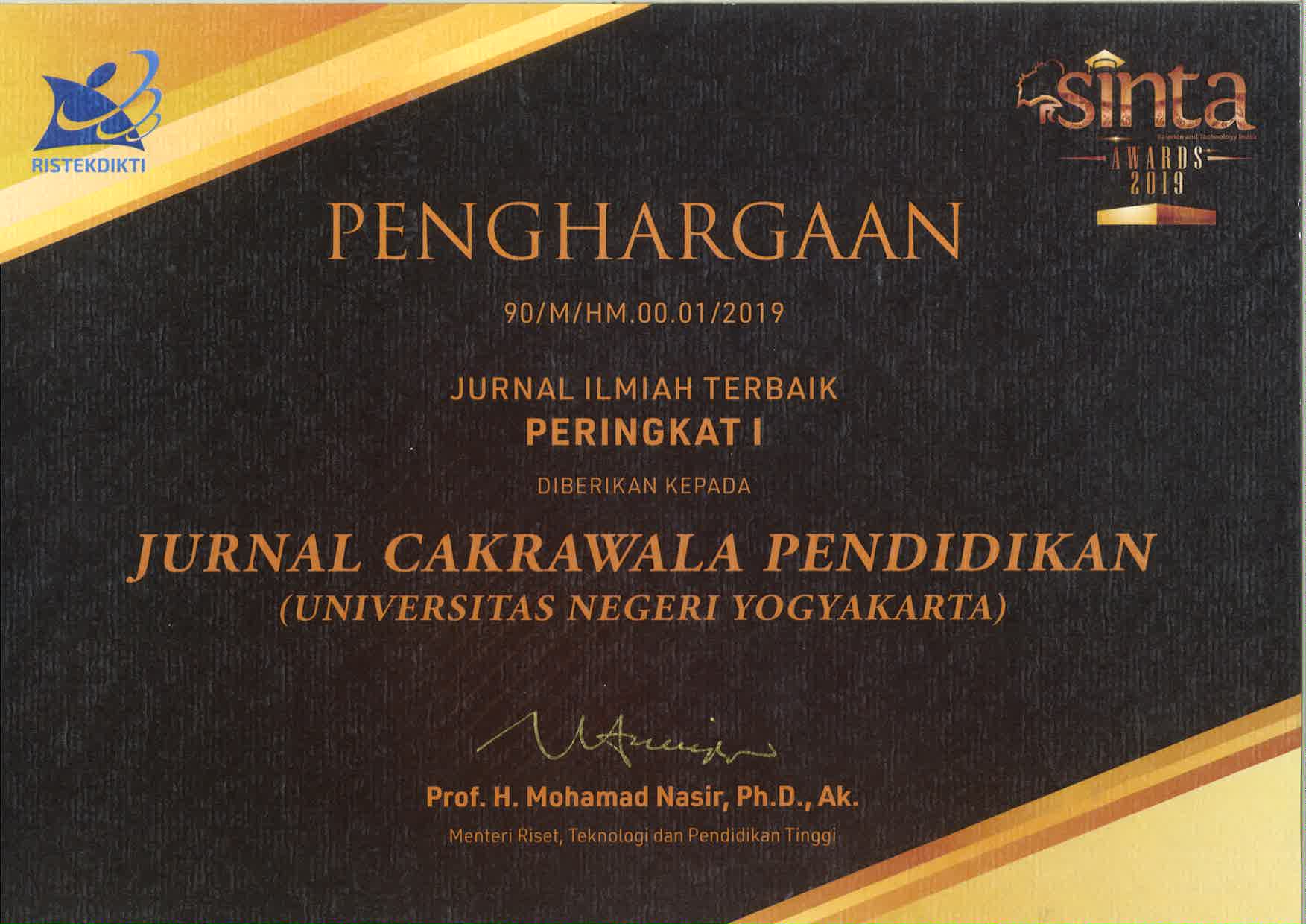PHENOMENOGRAPHY ANALYSIS OF STUDENTS' HISTORICAL THINKING ABILITY IN STUDYING SOCIAL HISTORY
Downloads
Downloads
Bernhard, R. (2017). Are historical thinking skills important to history teachers? Some findings from a qualitative interview study in Austria. History Education Research Journal, 14(2), 29-39. https://doi.org/10.18546/HERJ.14.2.03.
Biggs, J., & Tang, C. (2003). Teaching for quality learning at university. Maidenhead, England: SRHE. OUP.
Carlsson, M. A., Fí¼lí¼p, M., & Marton, F. (2001). Peeling the onion: Student teachers' of literary understanding. Scandinavian Journal of Educational Research, 45(1), 5-18. https://doi.org/10.1080/00313830020023366.
Cheng, E. W. L. (2016). Learning through the Variation Theory: A case study. International Journal of Teaching and Learning in Higher Education, 28(2), 283-292. http://www.isetl.org/ijtlhe/.
Dickinson, A. K., Lee, P. J., & Rogers, P. J. (1984). Learning history. Lincoln, UK: Heinemann Educational Publishers.
Fauzi, W. I., Santosa, A. B., & Tarunasena, T. (2019). Optimizing the use of history textbook through brain-based learning. Paramita: Historical Studies Journal, 29(2), 139-156. https://doi.org/10.15294/paramita.v29i2.15729.
Johanson, L. B. (2015). The Norwegian curriculum in history and historical thinking: A case study of three lower secondary schools. Acta Didactica Norge, 9(1), 5-24. https://doi.org/10.5617/adno.1301.
Lam, H. C. (2019). The phenomenography tradition in the study of classroom teaching. International Journal of Research and Method in Education, 42(5), 513-524. https://doi.org/10.1080/1743727X.2018.1518417.
Larsson, K. (2017). Understanding and teaching critical thinking - A new approach. International Journal of Educational Research, 84(December 2016), 32-42. https://doi.org/10.1016/j.ijer.2017.05.004.
Levstik, L. S., & Barton, K. C. (2011). Doing history: Investigating with children in elementary and middle schools. New York, NY: Routledge.
Linder, C., & Marshall, D. (2003). Reflection and phenomenography: Towards theoretical and educational development possibilities. Learning and Instruction, 13(3), 271-284. https://doi.org/10.1016/S0959-4752(02)00002-6.
Lloyd, C. (1989). Realism, structurism, and history. Theory and Society, 18(4), 451-494. https://doi.org/10.1007/BF00136435.
Marton, F., & Säljí¶, R. (2005). Approaches to learning. In F. Marton, D. Hounsell, & N. J. Entewistle (Eds.). The experience of learning: Implications for teaching and studying in higher education. California, CA: Scottish Academic Press, pp. 106-125.
Marton, F. (2009). Beyond learning as changing participation. Scandinavian Journal of Educational Research, 53(2), 211-215. https://doi.org/10.1080/00313830902757675.
Marton, F., Cheung, W. M., & Chan, S. W. Y. (2019). The object of learning in action research and learning study. Educational Action Research, 27(4), 481-495. https://doi.org/10.1080/09650792.2018.1489873.
Marton, F., & Pong, W. Y. (2005). On the unit of description in phenomenography. Higher Education Research and Development, 24(4), 335-348. https://doi.org/10.1080/07294360500284706.
Marton, F., Watkins, D., & Tang, C. (1997). Discontinuities and continuities in the experience of learning: An interview study of high-school students in Hong Kong. Learning and Instruction, 7(1), 21-48. https://doi.org/10.1016/S0959-4752(96)00009-6.
McCullagh, C. B. (2002). The truth of history. London: Routledge.
Narmaditya, B. S., Wulandari, D., & Sakarji, S. R. B. (2018). Does problem-based learning improve critical thinking skill? Cakrawala Pendidikan, 37(3), 378-388. https://doi.org/10.21831/cp.v38i3.21548.
Ojo, E., Booth, S., & Woollacott, L. (2019). Faculty's conceptions of teaching introductory economics in higher education: A phenomenographic study in a South African context. International Review of Economics Education, 30, 1-11. https://doi.org/10.1016/j.iree.2018.05.001.
Padmanabhan, N., & Gafoor, P. A. (2011). Methodology of history. India: Calicut University.
Sharma, S. K. (2008). Teaching of history. New Delhi: lotus Press.
Stolz, S. A. (2020). Phenomenology and phenomenography in educational research: A critique. Educational Philosophy and Theory, 0(0), 1-20. https://doi.org/10.1080/00131857.2020.1724088.
Tok, B. R. (2016). Learning problems in History subject among the Secondary School-Students of Papum-pare district of Arunachal Pradesh. IRA International Journal of Education and Multidisciplinary Studies, 5(2), 133-139. https://doi.org/10.21013/jems.v5.n2.p9.
Van Alphen, F., & Van Nieuwenhuyse, K. (2019). Conceptualizing 'identity' in History Education Research. International Journal of Research on History Didactics, History Education, and Historical Culture, 40, 81-114.
Vivancos, A. E., & Ferrer, L. A. (2018). What is historically significant? Historical thinking through the narratives of college students1. Educ. Pesqui, 44 Sí£o Paulo, 1-16. https://doi.org/10.1590/s1678-4634201709168641.
Wineburg, S. (1999). Historical thinking and other unnatural acts. Phi Delta Kappan, 80(7), 488-499. http://www.jstor.org/stable/2043949
Yates, C., Partridge, H., & Bruce, C. (2012). Exploring information experiences through phenomenography. Library and Information Research, 36(112), 96-119. https://doi.org/10.29173/lirg496.
Jurnal Cakrawala Pendidikan, Jurnal Ilmiah Pendidikan, with ISSN: 0216-1370, is published by the Institute of Education Development and Quality Assurance (LPPMP UNY). Cakrawala Pendidikan has been recently has been re-accredited by Indonesian Ministry of Education and Culture decision Number 230/E/KPT/2022 which is valid for five years since enacted on 30 December 2022.




























